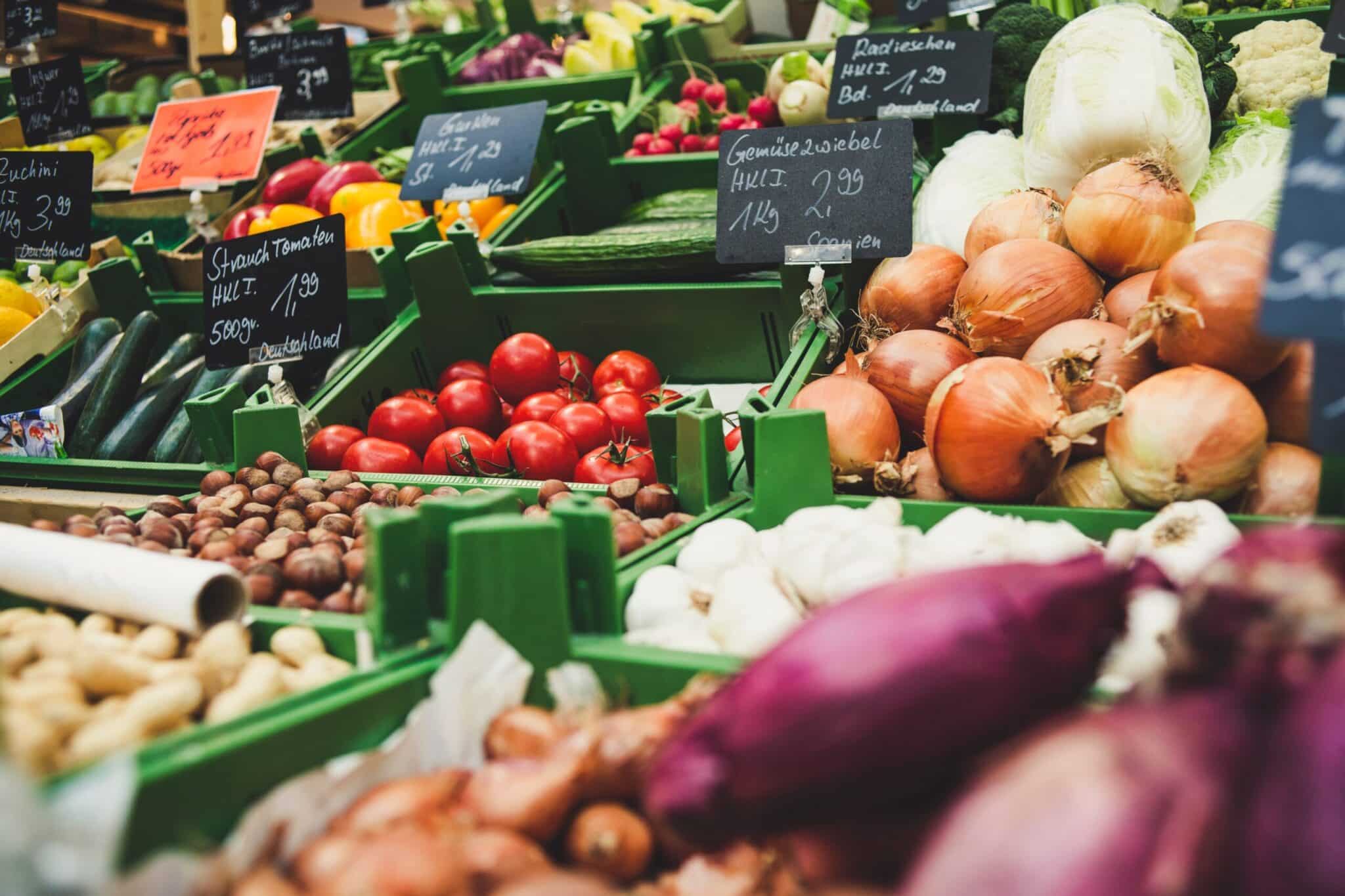5 Ways to Save Money on Groceries
If you read my “How We Meal Plan” post, you know that my husband and I used to struggle with spending too much money at the grocery store each month. Whether we are in “unprecedented” times or not, saving money is something we’re always interested in. We aren’t a textbook “frugal family”, but we have discovered some ways to simplify our shopping and save money on groceries.

Five Ways to Save Money on Groceries Every Month
1) Start with a Meal Plan
One of the simplest ways to save money at the grocery store is to have a shopping list that fits your needs. In 2017, we asked how Plan to Eat helps our customers, and based on the 2,568 customers that responded, we found that they had a 23% reduction in food costs using Plan to Eat! Grocery costs in a household, per person, per month, was reduced from $199 to $152. The main reason for these savings? Creating a meal plan!
It’s easy to grocery shop without a plan and buy things you think you need, but that can lead to a lot of wasted money and food. So by creating a meal plan and generating a shopping list, you’re on your way to saving money!
Using a shopping list that’s generated from recipes enables you to have a list composed of the ingredients you need for your week (or month) of planning. Rather than adding items to your cart at random, you will buy items that have a purpose.
Being intentional with your purchases immediately saves you money on groceries.
2) Shop at Home First
We “shop” in our cupboards and fridge at home when creating a meal plan. Especially with some of the shopping we did at the beginning of the shutdown, we have some extra staples in our kitchen that need to get used up!
I use the “with ingredients” filter in my Plan to Eat recipe book to find recipes that contain the items we already have and add them to my Planner. This way, I’m working around items we already have in stock, rather than buying all new ingredients for each recipe.

3) Plan for Leftovers
We enjoy having leftovers at our house, so I adjust our recipes to have a little bit larger serving size. But if you don’t like leftovers or rarely eat them, you can adjust the serving sizes of your recipes to fit the exact number of people your feeding! That way, you don’t buy more than you need.
We use the Leftovers feature because it’s easy to keep track of what we have in the fridge and actually eat our leftovers, rather than forgetting about them and letting them go to waste.
4) Use Grocery Delivery
One of the most impactful tools for saving money on groceries is the option for grocery delivery or pick up. Even if you have a meal plan and a grocery list generated from your recipes, you still might go to the store and over purchase because something looks appealing.
Ordering your groceries online can help you stick to exactly what’s on your list and that’s even easier with the grocery delivery option in Plan to Eat! Automatically sending your shopping list to a grocery service prevents you from impulse buying items not on your list.
5) Calculate Cost Per Serving
Finally, you can use the “cost per serving” field in the nutrition section of your recipes to help calculate your cost per serving for each day on the Planner. While this information needs to be added manually, you can find recipes online that already have this information calculated.
We like the way Budget Bytes has her pricing information structured for both the recipes and ingredients.
Bonus Tip!
If you’re really serious about budgeting, we recommend checking out You Need A Budget. This is a budgeting app we’ve reviewed before and found it helpful for planning how to spend our money. Rather than reacting to your spending, YNAB helps you create a plan for where and how you’ll spend your money.
A meal plan and a money plan go hand in hand. 🙂
